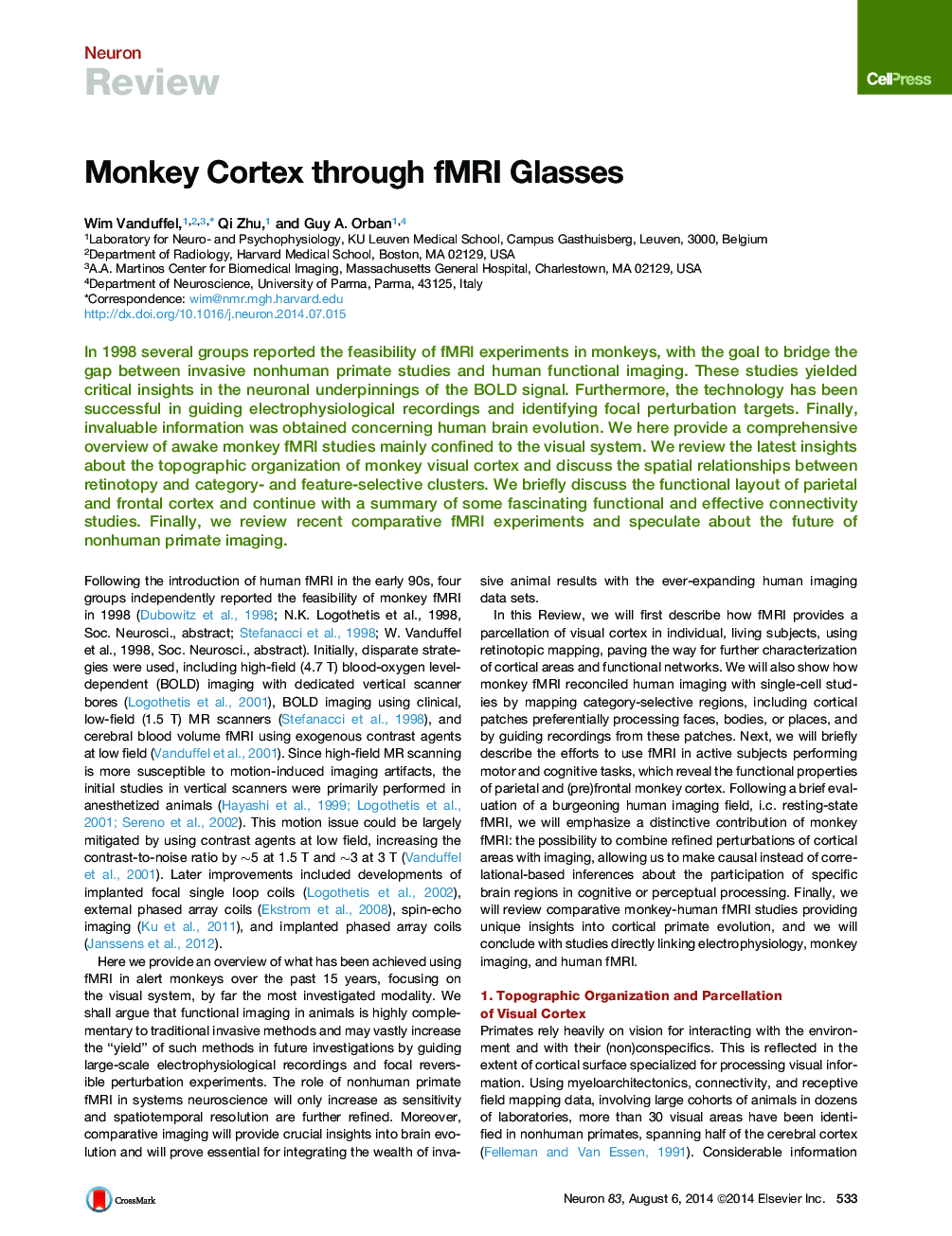| Article ID | Journal | Published Year | Pages | File Type |
|---|---|---|---|---|
| 4320950 | Neuron | 2014 | 18 Pages |
In 1998 several groups reported the feasibility of fMRI experiments in monkeys, with the goal to bridge the gap between invasive nonhuman primate studies and human functional imaging. These studies yielded critical insights in the neuronal underpinnings of the BOLD signal. Furthermore, the technology has been successful in guiding electrophysiological recordings and identifying focal perturbation targets. Finally, invaluable information was obtained concerning human brain evolution. We here provide a comprehensive overview of awake monkey fMRI studies mainly confined to the visual system. We review the latest insights about the topographic organization of monkey visual cortex and discuss the spatial relationships between retinotopy and category- and feature-selective clusters. We briefly discuss the functional layout of parietal and frontal cortex and continue with a summary of some fascinating functional and effective connectivity studies. Finally, we review recent comparative fMRI experiments and speculate about the future of nonhuman primate imaging.
